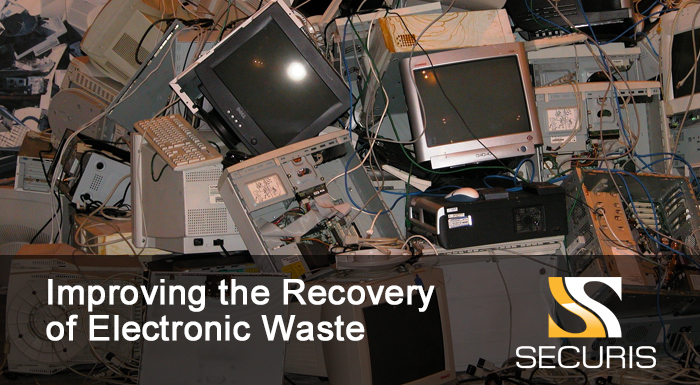Now more than ever, it’s important for the world to embrace healthy recycling practices and pass stronger policies to control the growing impact of electrical and electronic equipment on our health and on the environment. In the 2017 Global E-waste Monitor, the United Nations University found that the world produced a total of 44.7 Mt of e-waste.
E-waste Management Policies
In the Americas, the U.S. came out as the top generator of electronic waste in 2016. Compared to the rest of the world, the country has state and provincial laws for the management of e-waste. However, there is still a need for a national legislation to prevent improper disposal and treatment of electronic waste and to limit its adverse effects on the environment.
Asia was the leading producer of electronic waste in that same year, generating 40.7% of the world’s e-waste, and recycling only 20% of what they produced. Certain regions in this vast continent are showing increasing interest in possible solutions for this pressing problem; however, there’s still so much that needs to be done as some regions see zero collection rates.
Europe came second to Asia. Unlike the rest of the world, the European Union has implemented some of the most effective e-waste management practices today. Some countries in Northern Europe even have the highest collection rates in the world, nearly half of what they generate. It certainly helps that their e-waste management is regulated consistently by the Waste Electrical and Electronic Equipment (WEEE) Directive, which was put into effect in 2003.
Apart from strengthening recycling programs, these policies can further improve recovery processes of recyclable materials. This way, we can produce new products from used materials. We reduce e-waste, and consequently, the environmental risks attached to it.
Improving Recovery of Recyclable Materials
The CloseWEEE project is what the world needs right now. It combines research and innovation to improve recycling solutions. Recently, they came up with new microwave treatment tech specifically for lithium-ion (Li-ion) batteries that are discarded. As part of the process, these batteries are placed through pre-treatment where they are discharged. They also go through mechanical processing before they are transferred into a microwave furnace where they are heated rapidly.
As a result, the electrolytes evaporate. This process produces electrolyte-free material that will then be subject to hydrometallurgical treatment. This step is where metals such as cobalt, graphite, manganese, and lithium are extracted.
Recovering critical raw materials (CRMs) is a crucial step in the recycling process as these extracted substances will be used to create new products. The precious metals that are extracted can be used to create a variety of goods, including high-tech devices. But in general, materials that are recovered from battery recycling can be used by other industries aside from the battery industry. The steel industry, for example, can benefit from these recycled materials. On the other hand, it will still depend on the quality of the substances extracted.
CRMs may also be used to produce solar panels, energy-efficient lighting, wind turbines and more. That makes recycling e-waste even more beneficial to the environment. By improving recovery solutions for these precious materials, we can also help other programs that are doing their part to save the planet.
CloseWEEE is in its final year, but it is not, in any way, slowing down. They’ve come up with integrated solutions designed for the pre-processing of EEE, which is an advanced recovery technique for CRMs such as graphite and antimony. Moreover, the CloseWEEE project played a crucial role in the creation of a compound that’s high in quality and is very suitable for applications in new EEE. It is a specific kind of plastic polymer, and it is often used in 3D printing.
Takeaway
Everyone has a role to play in our fight against pollution. As consumers and as citizens, we can all demand stronger policies and better recycling programs from our governments and communities. Better yet, we can take part in the creation of these new solutions. As CloseWEEE proves, we can push the limits of innovation and produce revolutionary solutions that can make the world a better place. We must if we want to preserve all that is good in this world.
For more information about recovering your electronic equipment waste, please contact us. We will be happy to assist you with all your e-waste needs.

